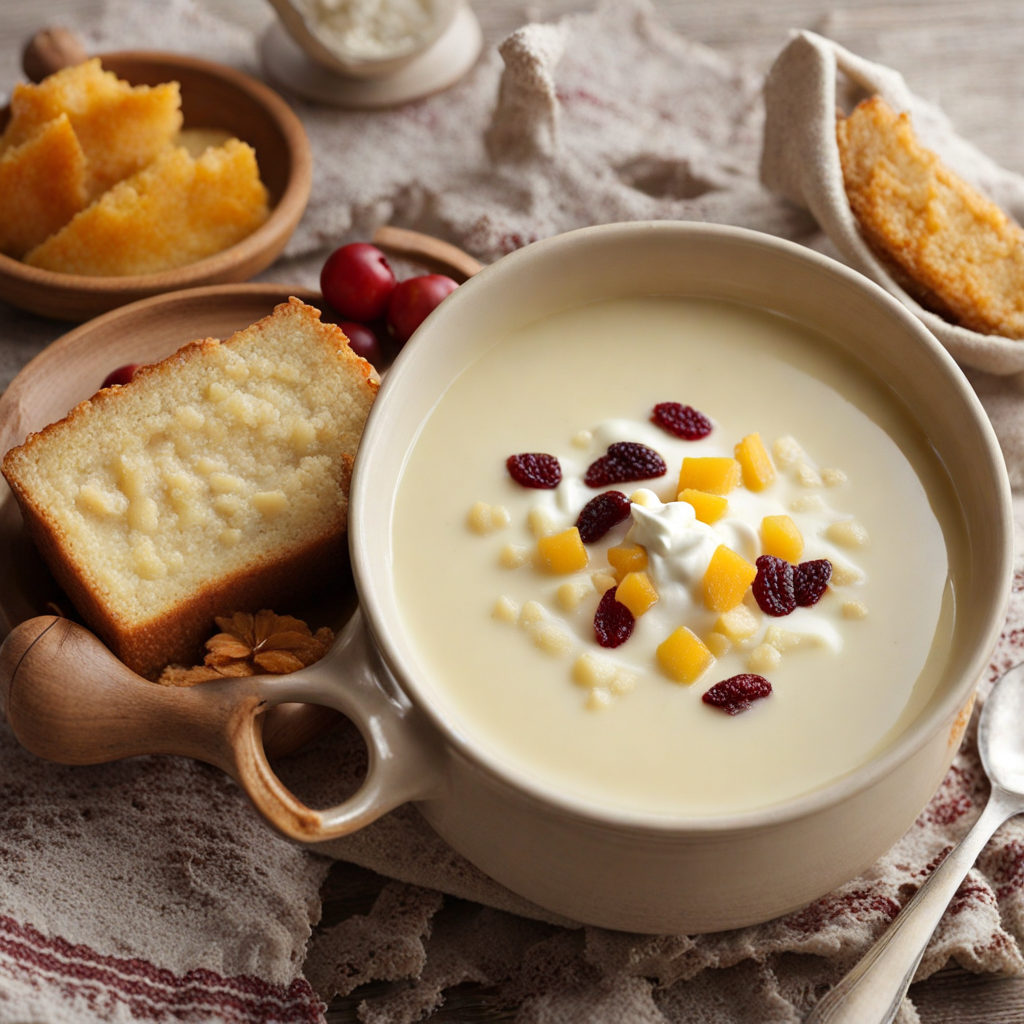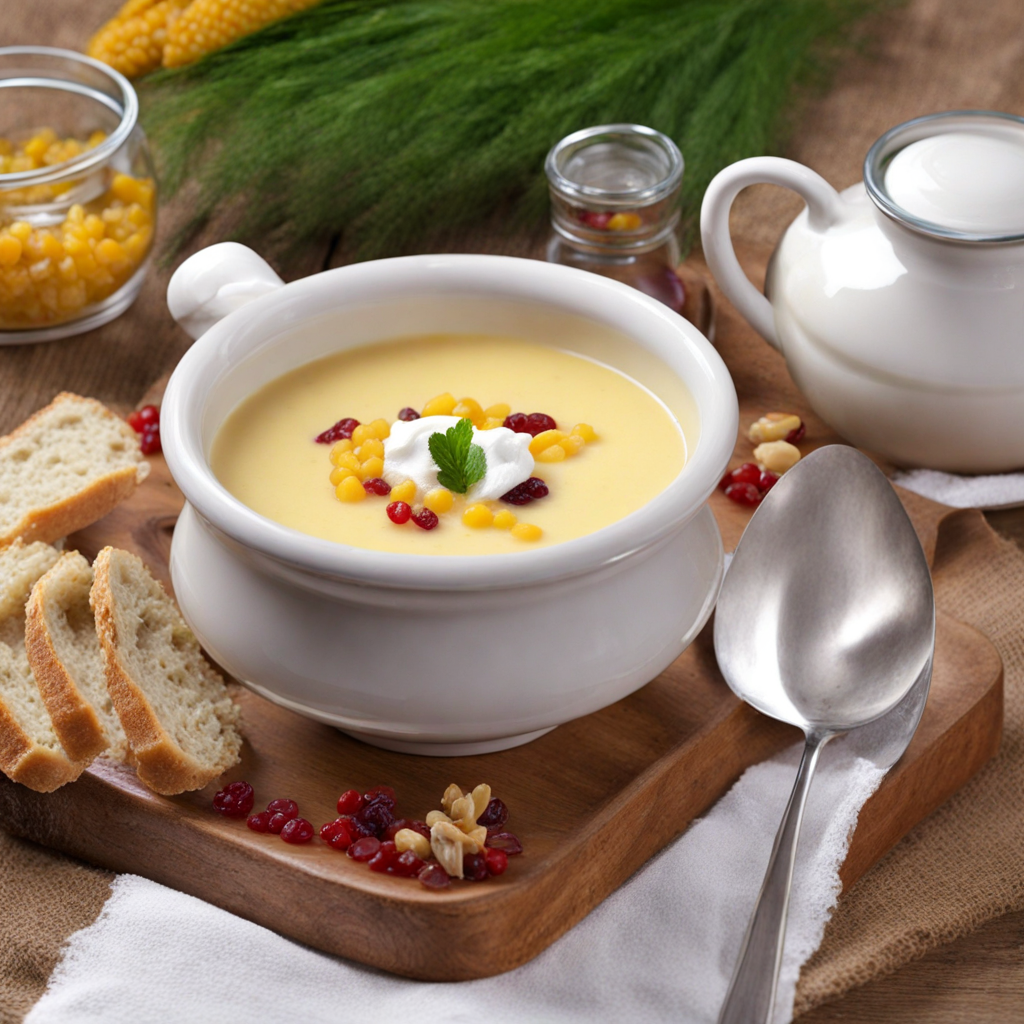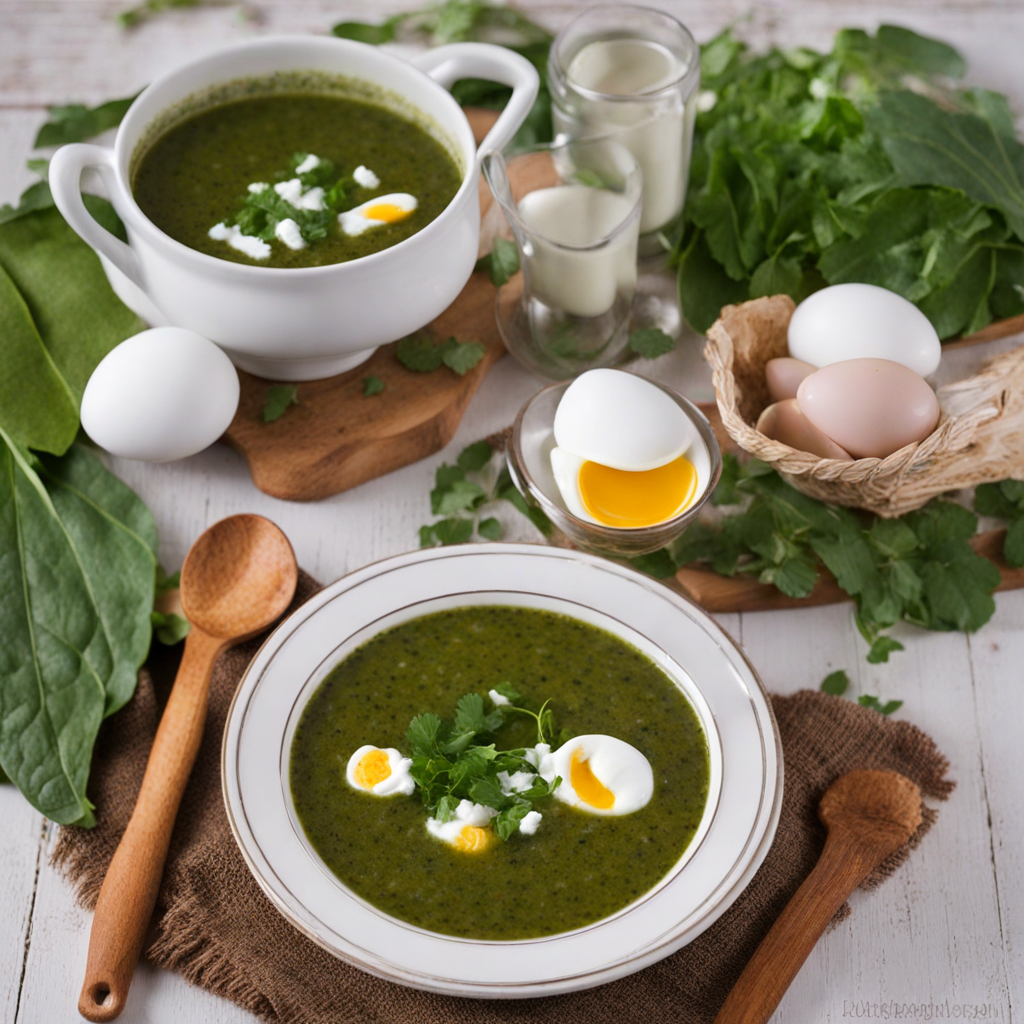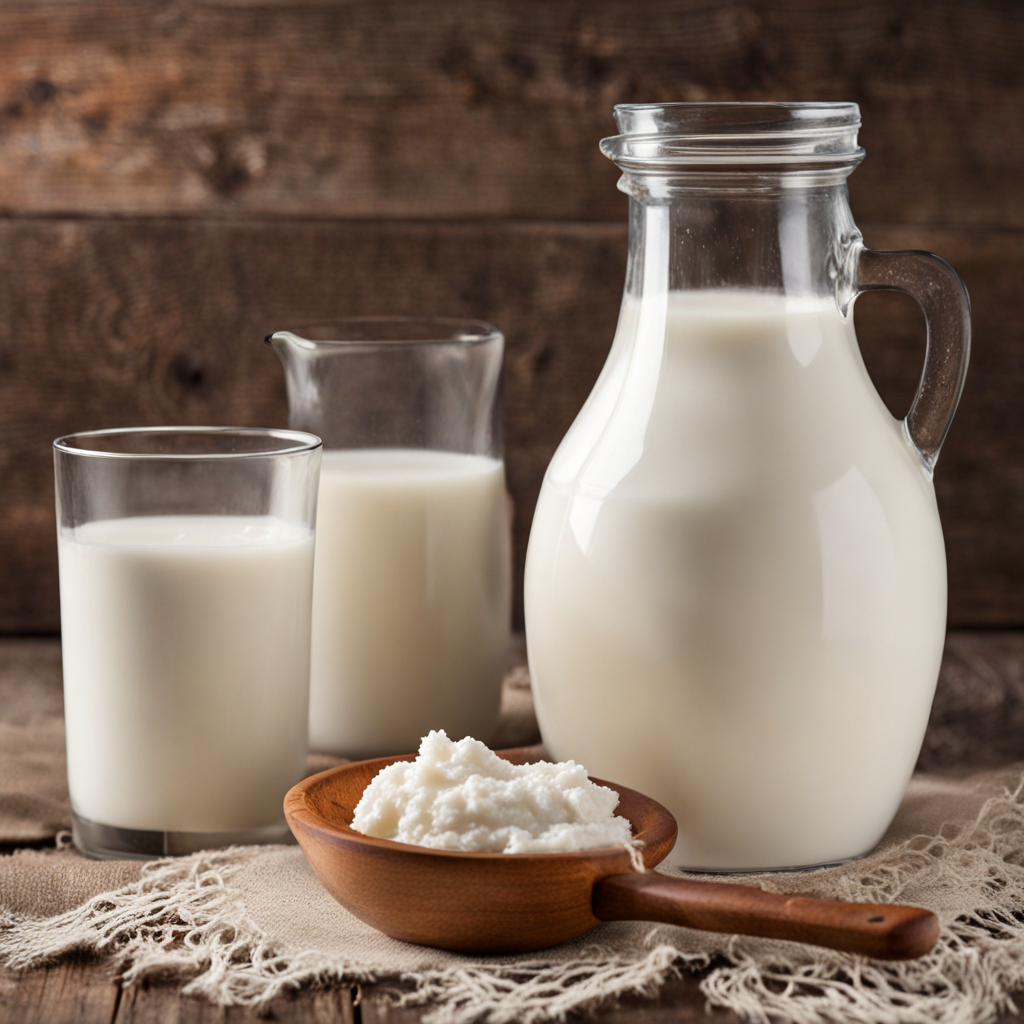Maize Soup
Maize Soup, or "Maizes Zupa," is a traditional Latvian dish that beautifully showcases the country's rich agricultural heritage. This comforting soup is primarily made from a base of rye bread, which is a staple in Latvian cuisine. The bread is often toasted or slightly dried before being immersed in a broth, allowing it to absorb flavors while breaking down into a creamy, thick consistency. The deep, earthy tones of the rye contribute a unique depth, making every spoonful a reflection of Latvia’s rustic charm. To enhance the flavor profile, Maize Soup is typically enriched with ingredients such as milk or cream, which lend a velvety texture, and sweetened with honey or sugar to balance the savory notes. Some variations even incorporate spices like cinnamon or vanilla, elevating the soup to a delightful dessert-like experience. Additionally, it may be garnished with nuts, dried fruits, or fresh herbs, adding layers of texture and flavor that surprise the palate. This dish is often enjoyed warm, providing a hearty option for colder months, but can also be served chilled during the summer. Maize Soup is not just a meal; it’s a culinary journey that evokes a sense of nostalgia and connection to Latvian traditions. Whether savored as a comforting lunch or a unique dinner starter, its distinctive taste offers food lovers an opportunity to explore the lesser-known, yet equally captivating, facets of Latvian gastronomy.
How It Became This Dish
Origin of Maizes zupa Maizes zupa, a traditional Latvian dish, translates to "bread soup." This humble yet hearty soup has its roots deeply embedded in the agricultural practices and culinary traditions of Latvia. The dish emerged during the medieval period, around the 14th century, as a way to utilize stale bread, which was a common staple in the diet of the Latvian people. Bread held significant cultural importance, often considered the "staff of life." Given its central role, it is no surprise that creative uses for leftover bread became vital in sustaining families during hard times. The primary ingredients of Maizes zupa include dark rye bread, which is a staple in Latvian cuisine, along with water, milk, sugar, and spices such as cinnamon and cardamom. The soup is typically sweetened with a generous amount of sugar or honey, reflecting the culinary tendency in the region to incorporate sweet flavors into savory dishes. The use of rye bread, in particular, highlights Latvia's agricultural heritage, as rye has been cultivated in the region for centuries and is integral to its bread-making traditions. \n Cultural Significance Maizes zupa is more than just a dish; it represents the resilience and resourcefulness of the Latvian people. Throughout history, Latvia has faced numerous challenges, including wars, occupations, and economic hardships. During these times, traditional dishes like Maizes zupa provided sustenance while also promoting the concept of minimizing waste. By transforming stale bread into a nourishing soup, families could ensure that nothing went to waste, reflecting a deep respect for food and the land. In Latvian culture, food is often associated with community and family gatherings. Maizes zupa is frequently served during festive occasions, such as Christmas and Midsummer celebrations. The soup is not only a dish to nourish the body but also a means to bring people together, serving as a conversation starter and a symbol of shared heritage. When served, Maizes zupa is often accompanied by sour cream or milk, which adds creaminess to the dish and enhances its flavors, making it a comforting choice in both everyday meals and special celebrations. \n Development Over Time As Latvia modernized and underwent various social changes in the 20th century, the preparation and presentation of Maizes zupa evolved. In the early 1900s, urbanization and the influence of other culinary traditions began to subtly alter the way traditional dishes were made. While the basic ingredients remained the same, variations of Maizes zupa began to emerge, including the addition of fruits such as apples or berries, which were often used to enhance the sweetness or add a seasonal touch to the dish. The post-World War II era saw a further transformation in Latvian food culture as the country experienced Soviet occupation. During this time, traditional foods were sometimes replaced by more standardized and industrialized options. However, the resilience of the Latvian people persisted, and many traditional recipes, including Maizes zupa, were preserved in family cookbooks, passed down through generations. The soup became a symbol of national pride, reminding Latvians of their cultural roots and culinary heritage. \n Modern Interpretations In contemporary Latvia, Maizes zupa is experiencing a renaissance as chefs and home cooks alike seek to honor traditional recipes while infusing them with modern culinary techniques and presentations. Local markets and restaurants have begun to showcase this beloved dish, often highlighting its rustic charm while also exploring innovative flavors. Some chefs experiment with artisanal bread, using different grains or adding unique spices to create a distinctive twist on the classic. Additionally, the resurgence of interest in local and organic ingredients has led to a renewed appreciation for Maizes zupa. Many Latvians are now more conscious of their food sources, seeking to support local farmers and producers. This shift has resulted in a greater emphasis on quality ingredients, elevating the soup from a simple comfort food to a dish that can be celebrated in fine dining establishments. \n Conclusion The history of Maizes zupa is a reflection of Latvia's enduring relationship with its culinary heritage. From its origins as a means to utilize stale bread to its modern interpretations in contemporary cuisine, this dish embodies the spirit of resourcefulness and community that defines Latvian culture. As it continues to evolve, Maizes zupa remains a beloved comfort food, a symbol of national pride, and a testament to the resilience of the Latvian people. Whether enjoyed in a traditional setting or reimagined in a modern kitchen, Maizes zupa will always hold a special place in the hearts and homes of Latvians.
You may like
Discover local flavors from Latvia







